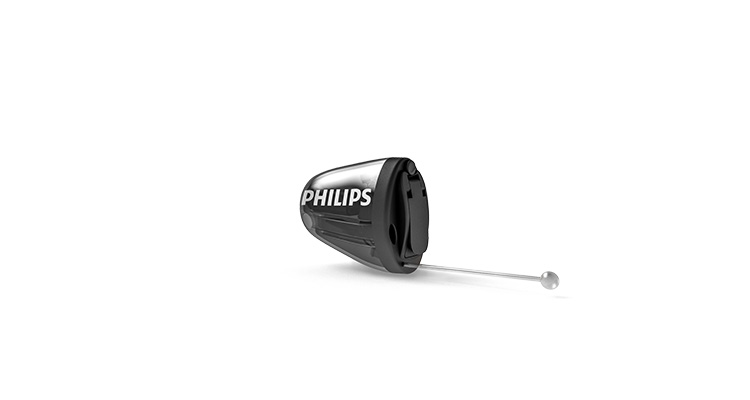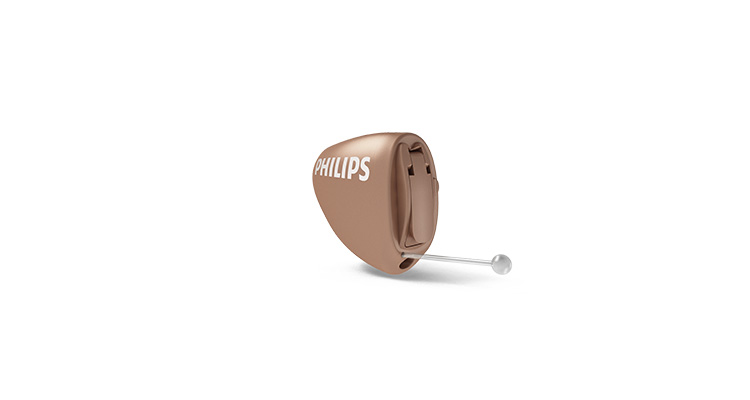
創聲聽力有限公司 Inno Hearing Solutions 明白聽障人士生活上面對的困難。由於市面上現有的產品、服務及支援,未能滿足到所有聽障人士的需要,我們決心為有需要人士提供多元化的創新方案,優質及更易負擔的助聽器價格及相關服務,以改善生活品質:
我們提供一站式個人化的方案,利用先進設備讓客人可以自行測試聽覺、試戴並選擇合適的助聽器類型;或由專業人員評測聽覺及驗配助聽器款式,過程簡化並專業, 滿足不同聽障人士的需求。
我們所有助聽器購買後都提供完善的售後跟進及維護服務。Philips飛利浦助聽器推薦更可享最高3年維護服務,我們亦有網上支援,以幫助客戶解決使用助聽器時遇到的問題。
我們積極向大眾推廣有關聽覺健康的資訊,提高社會的意識,支持各界聽覺健康組織的社區活動。
Equipped with ground-breaking Artificial Intelligence (AI) sound technology, Philips hearing aids offer you a natural listening experience. Our hearing aids allow you to hear speech clearly and easily, even in noisy and busy environments.
Our technology consists of directionality and noise reduction, carefully organizing sounds with irrelevant noise being suppressed. Cleaning the signal helps reduce hearing aid users’ cognitive load and listening effort.







In comparison with other hearing aid styles, this particular style of hearing aid features an extremely convenient rechargeable function, requiring only a short 3-hour charge to provide a full day's worth of power. Additionally, it supports multiple receivers’ options, which are suitable for varying degrees of hearing loss from mild to severe. Furthermore, this type of hearing aid is equipped with rechargeable batteries and an induction charging system, meeting the modern demand for convenient charging. Moreover, the hearing aid has sufficient battery life to support watching videos on smart devices.
The miniRITE T R hearing aid is designed with a minimalist and durable concept, featuring a lightweight and delicate appearance suitable for different users. The purchase of the hearing aid also comes with a USB 2.1 connector, allowing users to conveniently charge it using various power sources, making it an ideal choice. Wherever the user may be, they can easily ensure that the hearing aid remains adequately powered.

The Philips HearLink miniRITE T hearing aid incorporates powerful features, integrating modern technology into its in-the-ear receiver to provide users with a superior hearing and wearing experience. The hearing aid is equipped with a dual-program button design, making operation simple and direct, allowing users to make flexible adjustments according to their hearing needs and environment.
Moreover, the miniRITE T hearing aid style, utilizing telecoil technology, delivers impressive sound quality. Through this technology, this type of hearing aid can more accurately capture and process sound, enabling users to hear more clearly in various environments. This hearing aid is suitable for individuals with varying degrees of hearing loss, providing efficient and personalized auditory compensation for both mild and severe hearing loss.

Compared to other hearing aids styles, the BTE PP is a key member of the Philips HearLink series, and it has been widely praised for its outstanding functionality and suitability for specific hearing needs. This type of hearing aid belongs to the Behind-the-Ear (BTE) category and provides excellent auditory compensation effects for severe to profound hearing loss situations.
The BTE PP utilizes telecoil technology, enabling it to provide powerful auditory support and is equipped with dual-program buttons, allowing users to make adaptive adjustments based on different hearing environments. Its robust and durable design makes this type of hearing aid a reliable choice for long-term use, while also being very easy to operate. The main feature of this behind-the-ear hearing aid is its suitability for specific auditory needs, especially providing sufficient compensation for individuals with more severe hearing loss. Overall, the BTE PP hearing aid meets users' expectations for high-quality hearing assistance devices due to its powerful functionality, durability, and ease of operation. In addition, the "behind-the-ear" hearing aid style belongs to our brand's more mainstream product line, and the general positioning of hearing aid prices will be relatively lower.

The IIC (Invisible-in-Canal) hearing aid style from Philips HearLink is nearly invisible when worn, specially designed for individuals with mild to moderate hearing loss. The hearing aid can be worn deep in the ear canal, essentially achieving a completely invisible effect. Hearing aid users can enjoy high-quality auditory support while maintaining a high level of privacy, as it is not easily noticeable or observable by others. This makes these hearing aids highly suitable for users who value appearance, providing them with a great sense of confidence and comfort.
Furthermore, this hearing aid optimizes the received sound, ensuring that users can clearly hear the necessary sounds in various daily situations, enabling better participation in various activities. The IIC hearing aid type not only provides auditory support but also offers a more convenient and discreet solution for hearing loss. The "in-the-ear" hearing aid type belongs to our brand's currently very popular high-end product series, so depending on the selected model, the price positioning of the hearing aid is generally higher.

The CIC (Completely-in-Canal) hearing aid style is another in-the-ear product from Philips HearLink, designed for individuals with mild to moderate hearing loss, and it is also an almost completely invisible auditory assistance device.
This hearing aid is placed entirely in the ear canal and is almost invisible from the outside, providing users with a high level of privacy and boosting their confidence in purchasing and using hearing aids. It is suitable for hearing aid users who have specific requirements for the appearance of the device.

This hearing aid model provides a variety of personalized settings options, including hearing program buttons and volume control, to meet the unique needs of users for auditory support.
The ITC (In-The-Canal) hearing aid type is suitable for mild to severe hearing loss. Its unique feature is that it can be set inside the ear canal, making these hearing aids almost unnoticeable when worn, allowing users to feel more comfortable and confident while wearing it. The ITC hearing aid can provide users with a clear, natural auditory experience, enhancing their quality of life.
Philips hearing aids are equipped with “AI Sound Technology,” a voice processing technology that utilizes artificial intelligence (AI). This AI technology to improve hearing is based on over 10 million pieces of sound environment data sampling. This artificial intelligence learned through repeated testing and self-learning processes, before being adopted for use in Philips hearing aids.
Now even in busy environments such as a café or restaurant with various sounds and conversations, noise is reduced, and conversations can be heard more clearly. Our hearing technology also makes conversations easier to engage, even over the internet too, and hearing aid users can even prioritize speech they want to listen to. Our AI processing technology – “AI Sound Technology”, suppresses ambient noises while focusing on speech, which helps improve hearing.
The SoundMap state-of-the-art directional capability provides a natural hearing experience from all directions.
There are two types of directionality: Dynamic Directionality and Adaptive Directionality. The latest models are equipped with both of them, which allows the hearing aid user to adapt to different usage environments and preferences. Traditional hearing aids focus only on the sound in front of you and block out surrounding sounds and noise. The Artificial Intelligence installed in the hearing aid is a major breakthrough in processing signals using artificial intelligence! It continuously analyzes surrounding sounds and detects sudden or small noises or wind noise. It can eliminate and suppress unpleasant sounds even in complex environments, making conversations easier to hear.
The SoundMap directional hearing capability provides natural auditory perception from all directions. Traditional hearing aids focus on narrowing the range of audible sounds, which sacrifices the audibility of speech from other directions. Sound Map makes conversations sound natural and provides a sense of direction and distance, especially effective in group conversations.
With the emergence of Sound Map technology, hearing aids have opened up a new world of hearing. The AI installed in the hearing aid is a major breakthrough in processing signals using artificial intelligence. While hearing, it continuously analyses surrounding sounds and detects sudden or small noises or wind noise. It can eliminate and suppress unpleasant sounds even in complex environments, making conversations easier to hear. Sound Map 2 technology ensures that conversations can be easily heard and suppresses annoying sounds, even in noisy environments. This allows you to focus on conversations, enabling you to be comfortable in hearing, and go through each day in an energetic way.
AI Noise Suppression built-in this advanced audio processing technology also provides a natural hearing experience. The AI Noise Suppression continuously analyses and verifies the surrounding sound environment, making conversations in busy places such as restaurants and city centres clearer and more comfortable while using the hearing aids.
The benefits obtained will vary depending on the functionality installed in the selected model. The Sound Map 2 installed in the Hearlink xx30 series hearing aids, which is equipped with AI audio processing technology, providing clearer audio even in noisy environments where it’s difficult to hear. The hearing aids are also equipped with the Bluetooth technology which allows wireless connection of the hearing aid to external devices for comfortable listening with high clarity.
The new Sound Protection feature in Philips hearing aids reduces harsh sounds, such as wind noises and scratching noises, providing clearer sound and enhancing hearing comfort. It can immediately detect and suppress sudden loud and soft sounds, making conversations clearer and comfortable. Sound Map emphasizes conversations and provides clearer sound, allowing for clear communication while suppressing wind noise and sudden sounds while using hearing aids.
The new features in the Hearlink xx40 series hearing aids include Sound Protection Plus, which reduces harsh sounds and suppresses sudden loud and soft sounds, providing a comfortable listening experience and maintaining clear and audible conversations.
The hearing aid reacts so quickly that it can immediately suppress unexpected sudden impact noises, such as the clinking of dishes, objects falling down, and door closing sounds. It can handle the loud sound seamlessly no matter its loud impact noise or sudden impact noise.
The hearing aids are reducing diffuse noise when no speech is detected with its automatic control. It is to improve hearing comfort in environments with only noise situations; the amplification of surrounding interfering sounds (noise) is automatically suppressed. It is particularly useful even in noisy environments, when you want to relax alone.
The hearing aid makes your conversation stand out, while this Speech Clarifier function is on. Even in a noisy environment, conversation content is shielded. However, environmental sounds are not excessively shielded. To emphasize conversation, while suppressing meaningless sounds, it allows you to have a clearer conversation. It automatically adjusts the balance between conversation and noise with the Speech Clarifier. Speech Clarifier for noise suppression is very important for speech understanding in complex hearing environments. While focusing on reducing noise and maintaining conversation, it emphasizes conversation and captures surrounding sounds appropriately.
The hearing aids naturally amplify conversations with its unique amplification function which is built-in. Philips HearLink hearing aids amplifies sound while preserving the volume and quality of conversational speech, providing clear sound without distortion and scarification of speech.
When talking in noisy places such as street corners or restaurants, the voice is amplified according to the surrounding environment, and the sound scene is preserved, so your hearing is clearer without distortion. Even when you are alone, such as sitting on a train, you are hassle-free too. When there is noise around, you can reduce the strength of the annoying noises according to your preference.
Philips HearLink hearing aids provide a more enriching experience in all music situations. Equipped with the realistic sound quality music program "HiFi Music Function", Philips hearing aids can detect the strength of sounds in music. We are now about to bring you the best music experience ever. The HiFi music function supports the following music scenes:
*The "HiFi Music" program is compatible with Hearlink 9040/30, 7040/30, 5040/30, and 3030 hearing aids. This function will be configured on your hearing aid by your hearing professional. It supports Bluetooth® communication, please use the HearLink2 application or remote control to switch programs and adjust the volume. Other models can also be switched using the button of the hearing aid. (Not supported by IIC or CIC without the button).
Also, it is now even more convenient than ever when your hearing aids are linked with smartphones. When you connect the Philips HearLink hearing aid to an iPhone or Android smartphone, you can directly transmit smartphone calls, music, etc., to the hearing aid and listen to them. In addition, if you download the “Philips HearLink 2” application for your smartphone, your smartphone becomes a remote control, allowing you to easily adjust the volume of the hearing aid and switch programs. You might also have your hearing aids adjusted through remote tuning services with a hearing healthcare professional.
This convenient portable charger is equipped with a built-in battery, allowing you to charge your hearing aids anytime, anywhere at your convenience. The charger supports fast charging too.

Hearing aids amplify sounds and speech which help to stimulate the auditory system and provide necessary auditory input to the brain. This helps preserve cognitive function, improve memory, and reduce the risk of cognitive decline.
Recent domestic and international studies have shown that due to hearing loss, the reduction in sound stimulation and information transmitted to the brain can lead to brain atrophy and weakening of nerve cells, significantly increasing the risk of dementia, and this has been clearly confirmed.
In addition, if hearing loss leads to communication difficulties, people may begin to avoid conversations and gradually become socially isolated, which are also considered risk factors for dementia.
If you notice any hearing loss, please do not ignore it and act as soon as possible. You should book a hearing test to assess your current condition and get fitted for the correct hearing aids if needed. Restoring good hearing can not only improve quality of life but also have a positive impact on cognitive function.
Like prescribing eyeglasses, choosing hearing aids based solely on personal preferences and demand may not achieve the best results or meet the user’s hearing needs.
Hearing aid fitting requires the involvement of professionals to test the hearing levels and choose the right fitting, which is done by audiologists or hearing specialists. The following is the general process for fitting suitable hearing aids:




For individuals with hearing loss, the above process is a highly personalized experience. Patients can choose based on their hearing levels as well as their personal preferences for hearing aid styles. Our professionals will provide suitable hearing aid recommendations for patients based on these factors, and we can clearly explain the prices of various hearing aids, ensuring that patients can select the right product.



Currently, many electronic products offer follow-up and after-sales services, and the purchase of hearing aids is no exception. When patients make a hearing aid purchase and begin to use it, our professionals will also regularly follow up to ensure the effectiveness and comfort of the hearing aids.
In a lot of cases, patients may need some adjustments after using the hearing aids to ensure that they continue to provide the best auditory experience. Customers can be assured that our hearing aid prices include a range of after-sales services, without the need for any additional fees. To effectively use a hearing aid, gradually increasing the daily wearing time and getting used to them are very important. By gradually increasing the usage, you can train your auditory system without putting too much pressure on your ears.
A hearing aid is a “regulated medical device” approved by the authorities. Hearing aids undergo strict approval and review, and can only be manufactured and sold after confirming a certain level of effectiveness and safety. Also, hearing aids must be fitted by professionals. Experts adjust them based on each individual’s hearing and preferences to provide a more comfortable experience.
On the other hand, a sound amplifier is a household appliance that does not require approval from authorities. Since it is not a medical device, its manufacturing and sale are not restricted, and its basic performance in enhancing hearing is not guaranteed.

